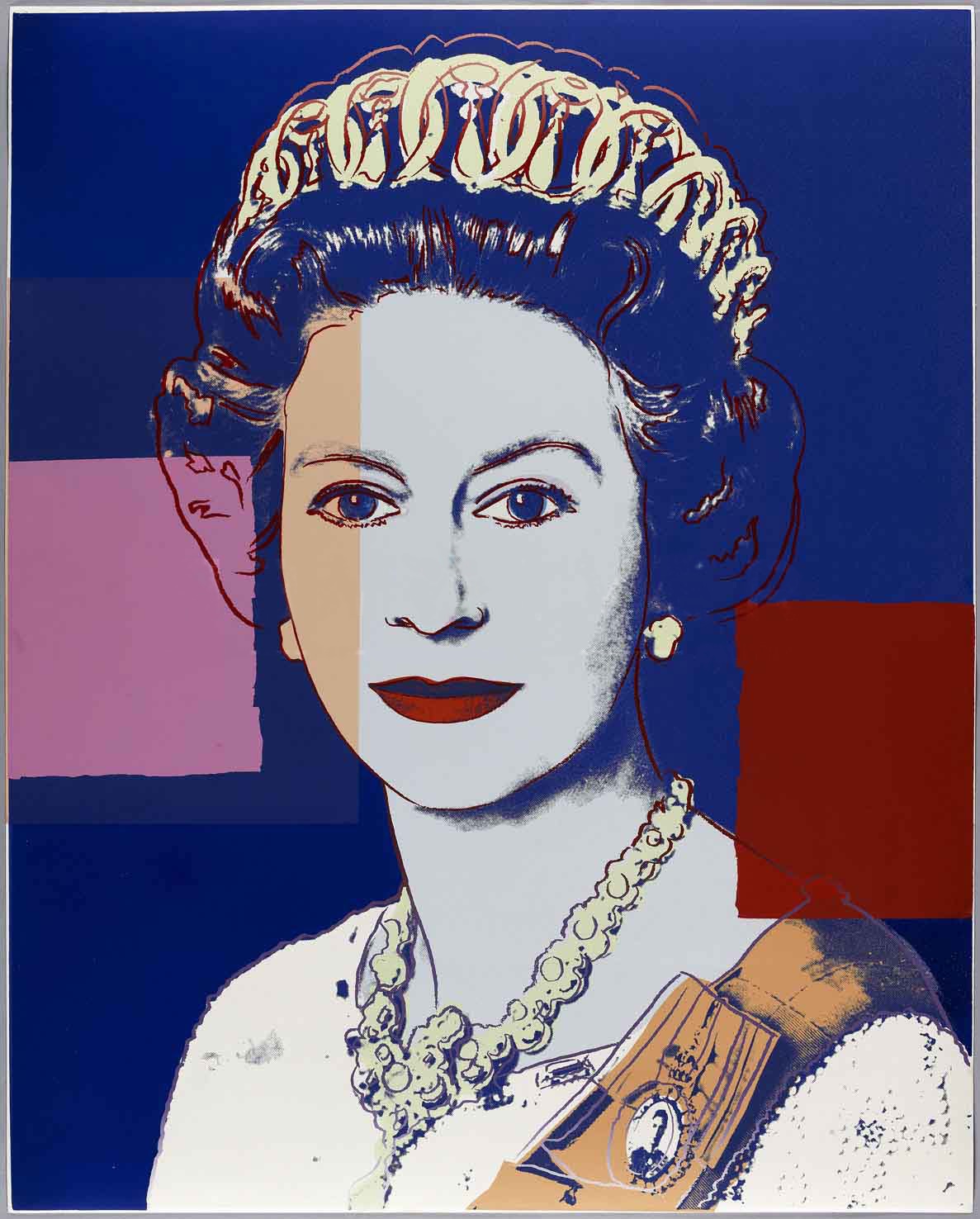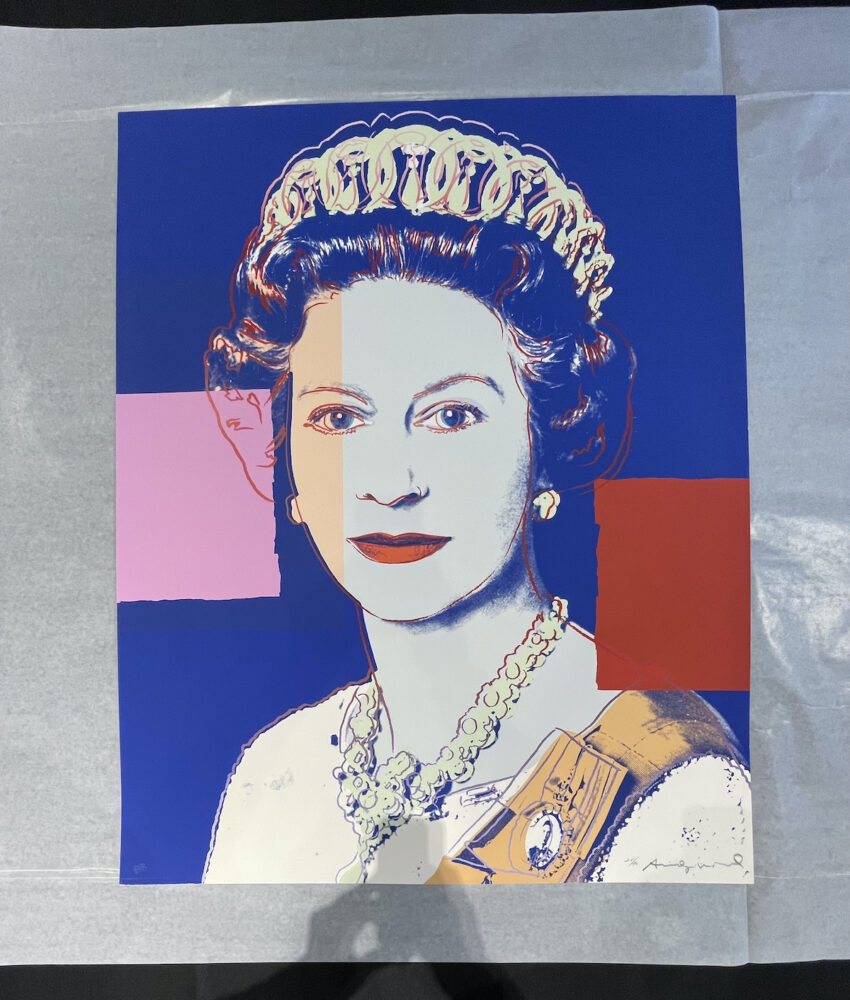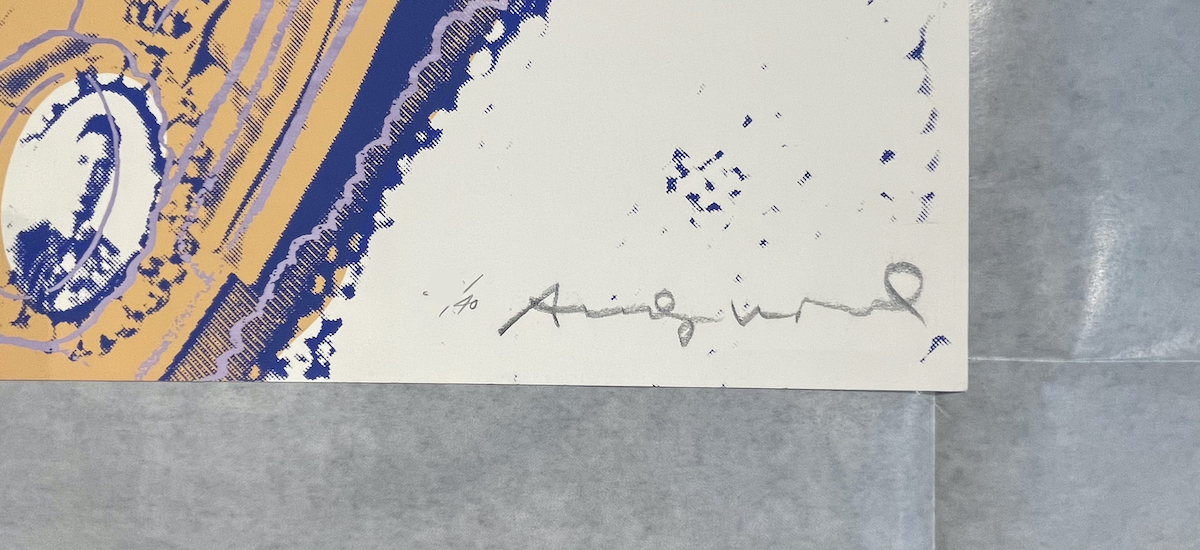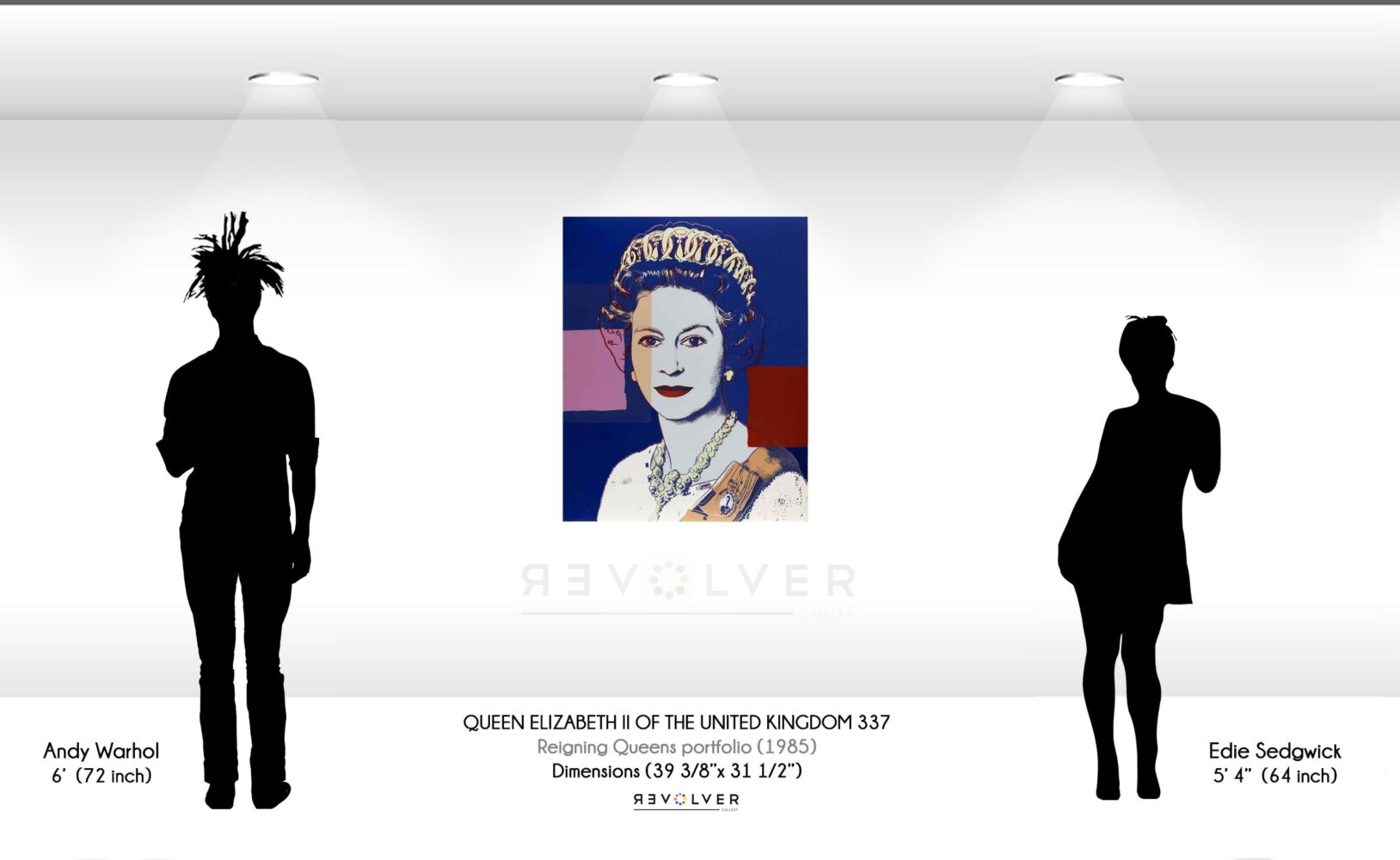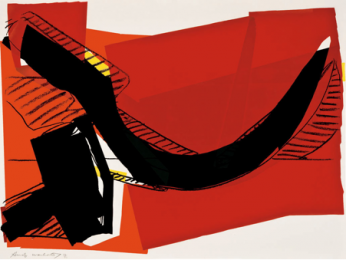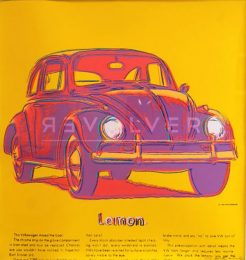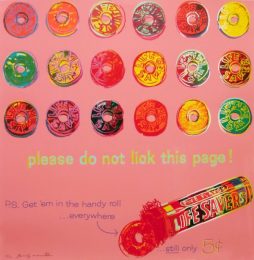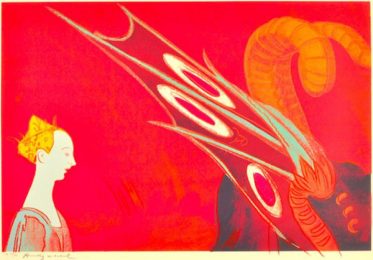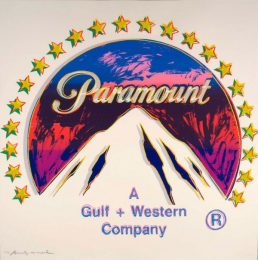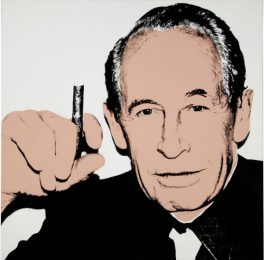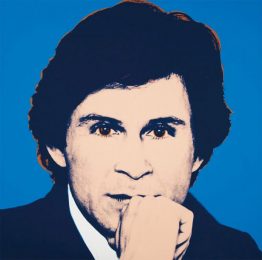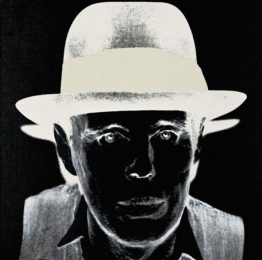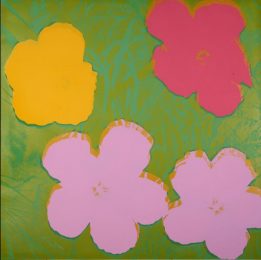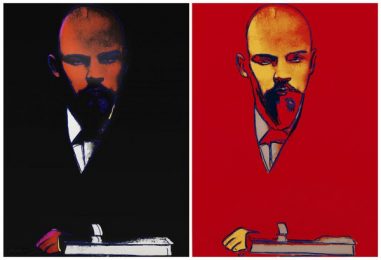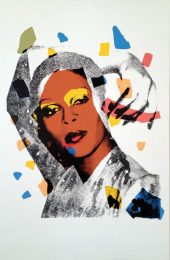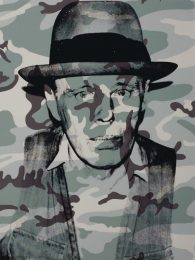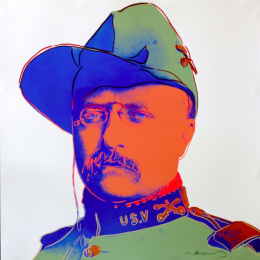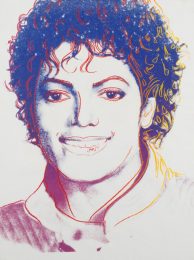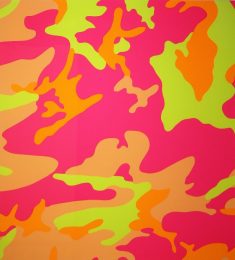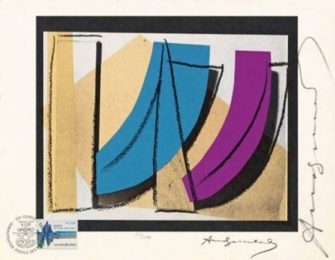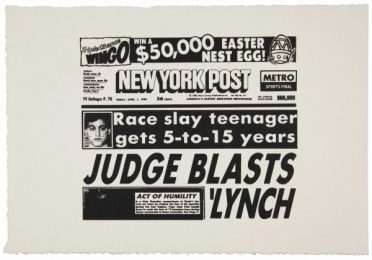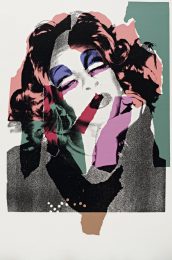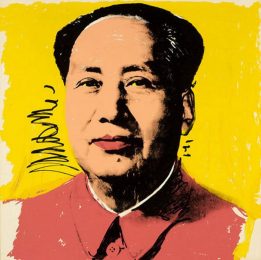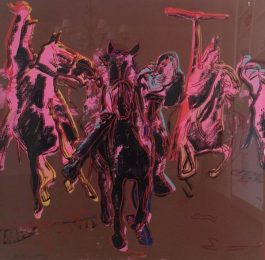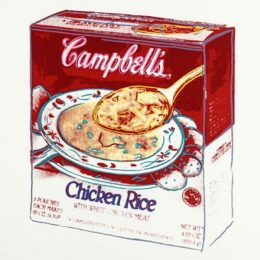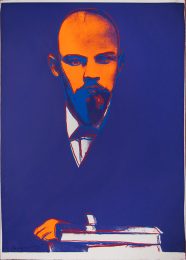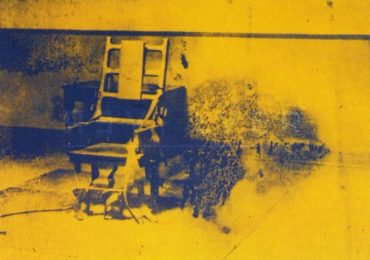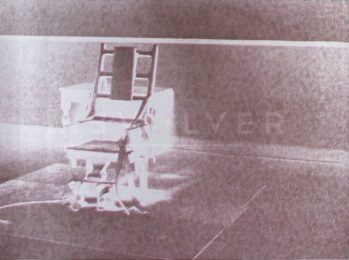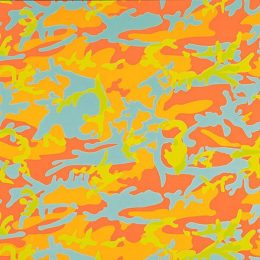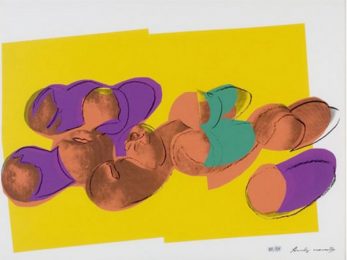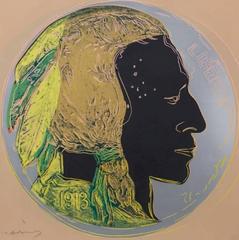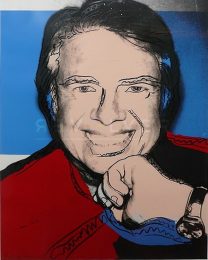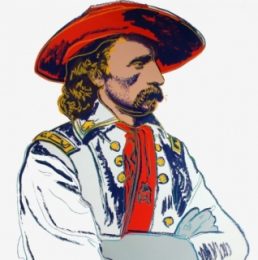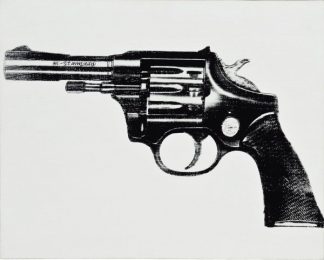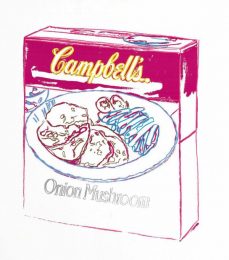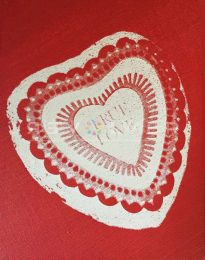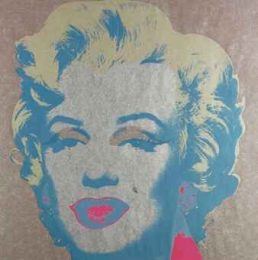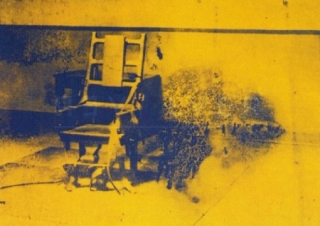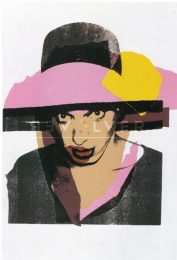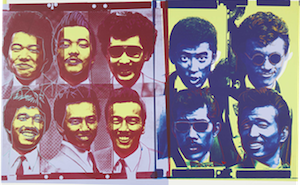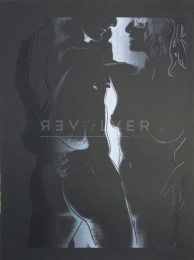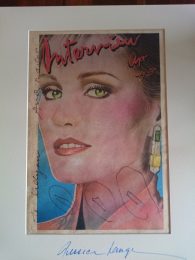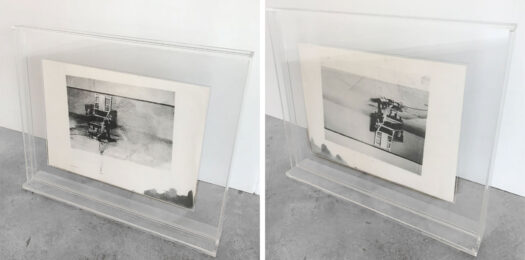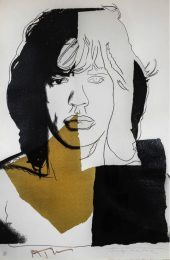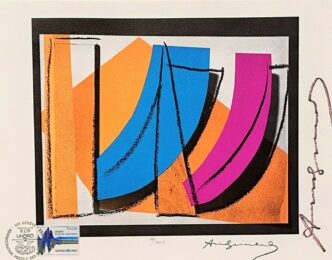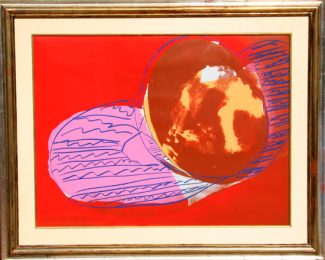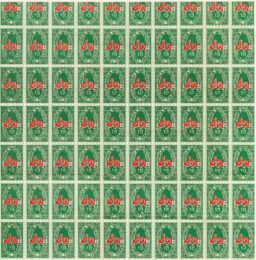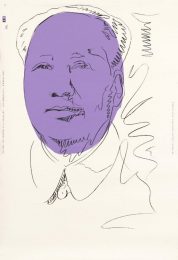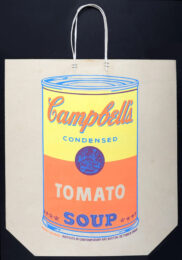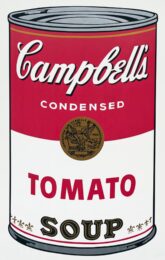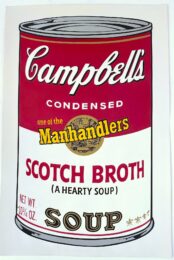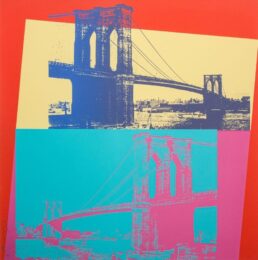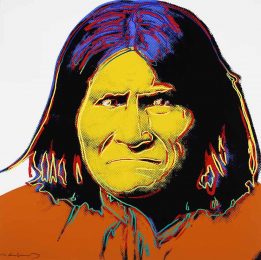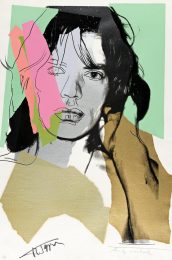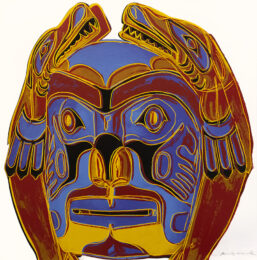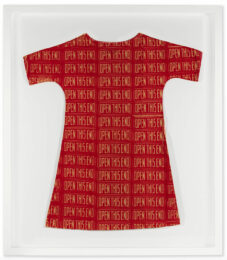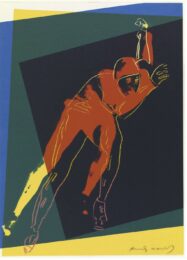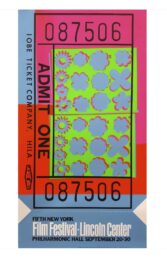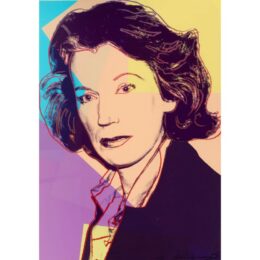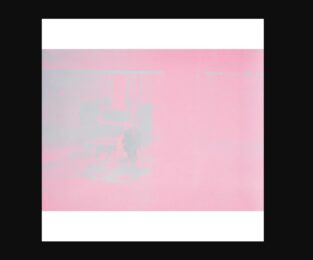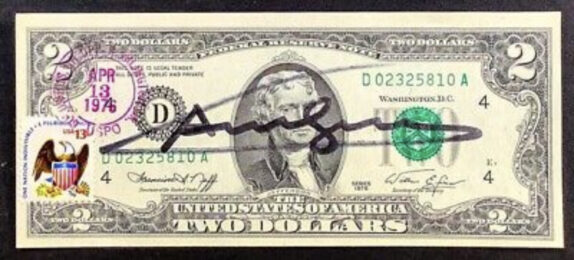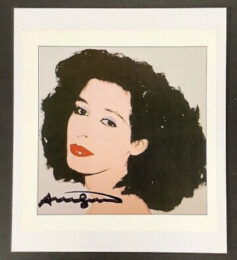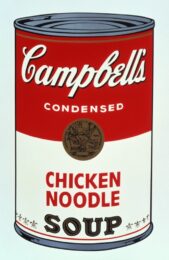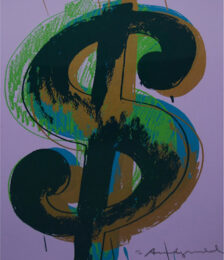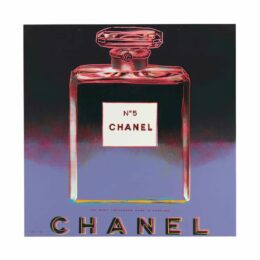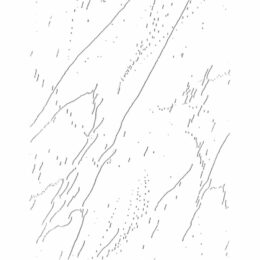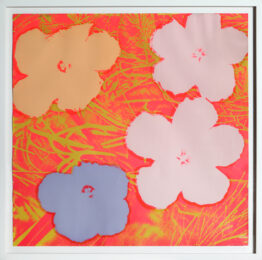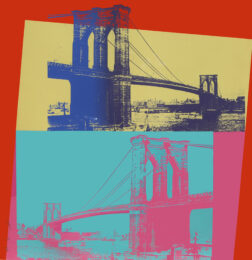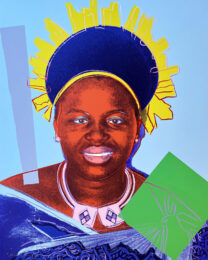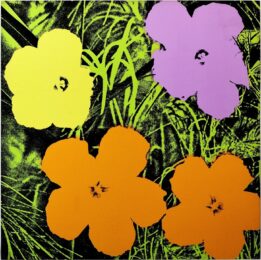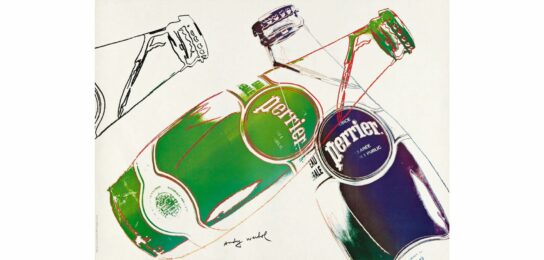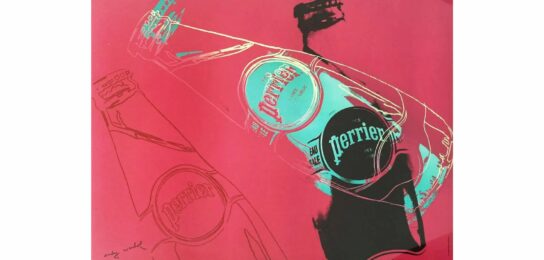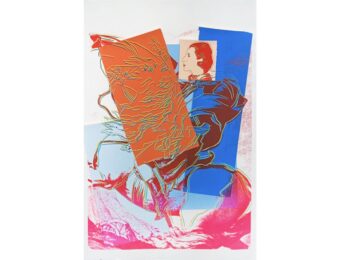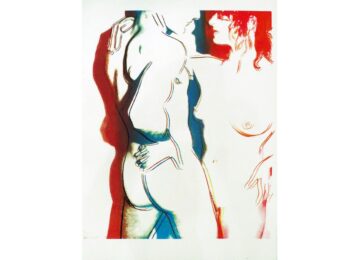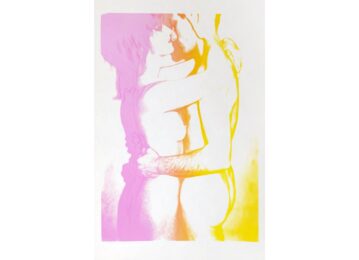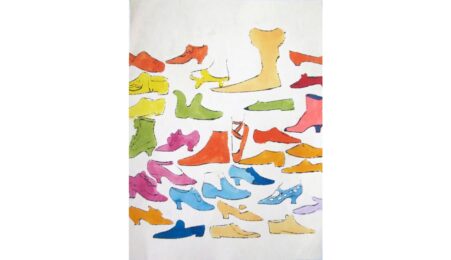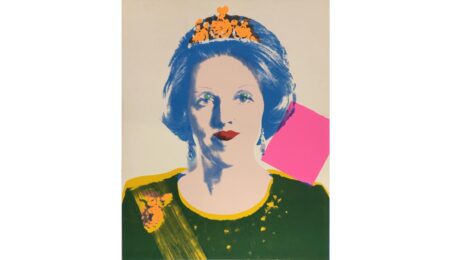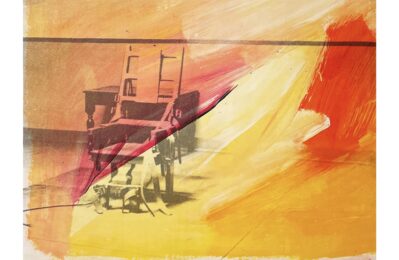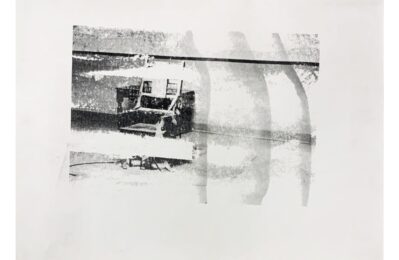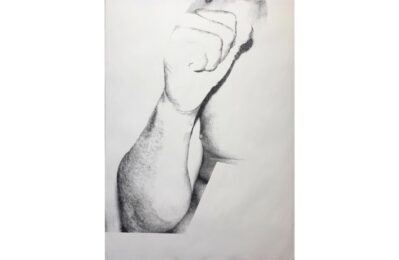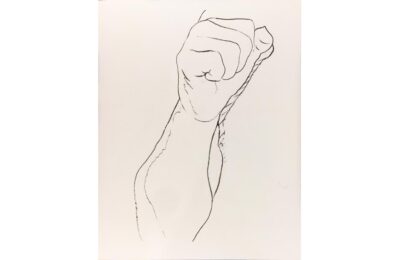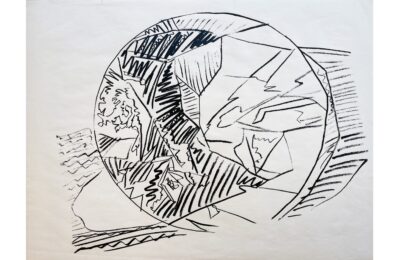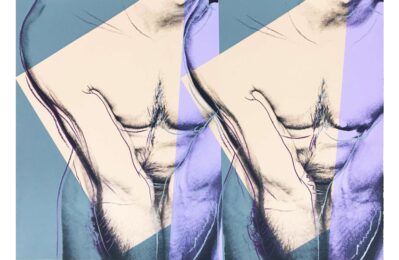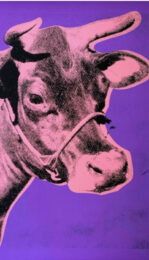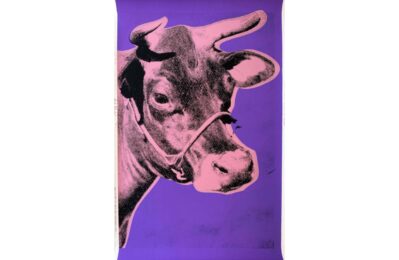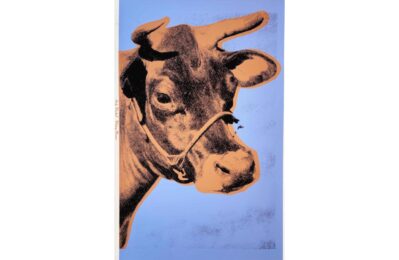Details — Click to read
Queen Elizabeth II 337 is a screen print by Andy Warhol completed in 1985. The portrait depicts one of the four monarchs in Andy Warhol’s Reigning Queens collection. This series contains four portraits of each four monarchs at the time, including Queen Margrethe II of Denmark, Queen Beatrix of The Netherlands, Queen Ntombi Twala of Swaziland, and Queen Elizabeth II of the United Kingdom.
This collection debuted in 1985 and became Warhol’s largest series in terms of portfolio size, published two years before his death in February 1987. In Queen Elizabeth II 337, the bright blue surrounding the queen emphasizes her strength and empowerment. The gradient change from bold blue to white gracefully draws one’s attention to the Queen’s white dress and soft pale skin.
Like many of Warhol’s works, he created these prints with the silkscreen method, which he favored for its reproductive reliability and precise results. In this portrait, Warhol chooses to outline the queen’s hair and crown in red, allowing the viewer’s eyes to focus on her bright face. Further, the red outlines emphasize the Queen’s eyes in the center of the picture.
Celebrity and fame fascinated Warhol, who had a specific love for female power. Notably, all four monarchs of this series obtained the throne due to birthright as opposed to marrying into royalty. Warhol often created images that evoke powerful feminine energy, such as Marilyn Monroe, Liz Taylor, and various Drag Queens. Here, Warhol takes a unique approach by using royalty as his inspiration. He thus confronts his audience with a powerful image of female authority.
Warhol initially created the collection for the UK, and fussed about the showing in America in his diary. “I had my opening at Leo Castelli’s to go to, of the Reigning Queens portfolio that I just hate George Mulder for showing here in America. [It was] supposed to be only for Europe—nobody here cares about royalty and it’ll be another bad review”.
Along with royalty, Warhol found interest in other global figures, often political leaders. We see this in his portraits of Nixon, Vladimir Lenin and Mao Zedong. For all of Warhol’s Queens portraits, he used official media photographs. These state portraits appeared on stamps and currency, evoking Warhol’s fascination for mass-production and the repetitive nature of images and objects in modern society. The photograph, taken by Peter Grugeon at Windsor Castle on April 2nd, 1975, was used for the announcement of the Queen’s Silver Jubilee in 1977.
Queen Elizabeth II 337 showcases Warhol’s coveted silkscreen layering technique, which (by the 1980s) he had mastered, allowing him to create more and more detailed and price designs. It is thus a supreme example of Warhol’s artistry and technique. In 2012, the Royal Collection purchased Warhol’s prints of Queen Elizabeth II to celebrate her 60 years on the throne (they are the only portraits owned by the Royal Collection which the Queen did not directly pose for). The series seemed to bring Warhol one step closer to his ultimate wish: “I want to be as famous as the Queen of England.”

